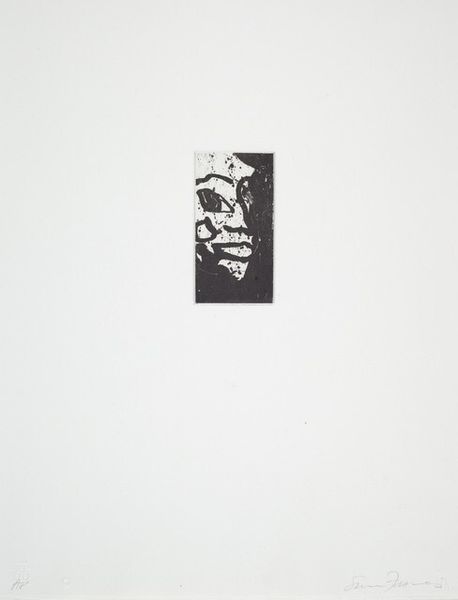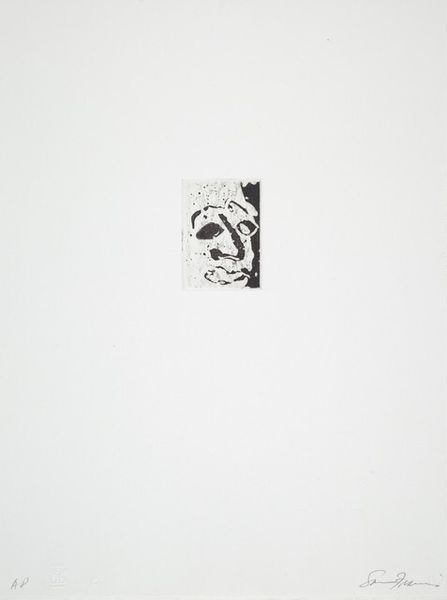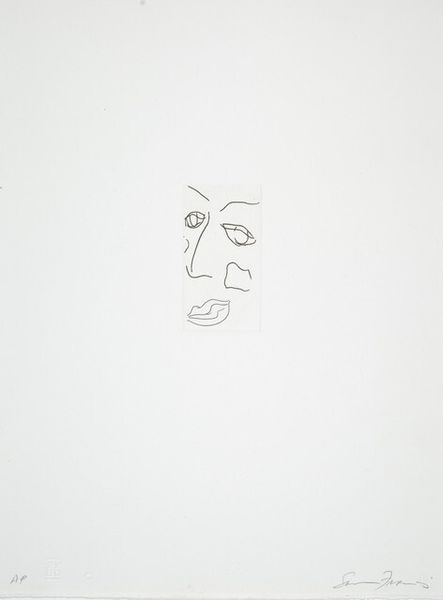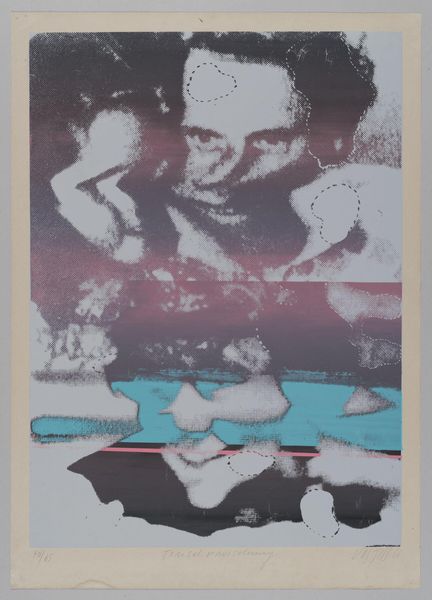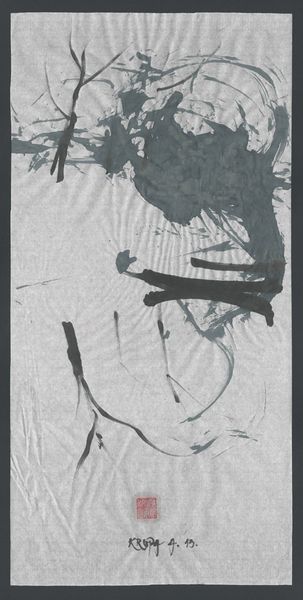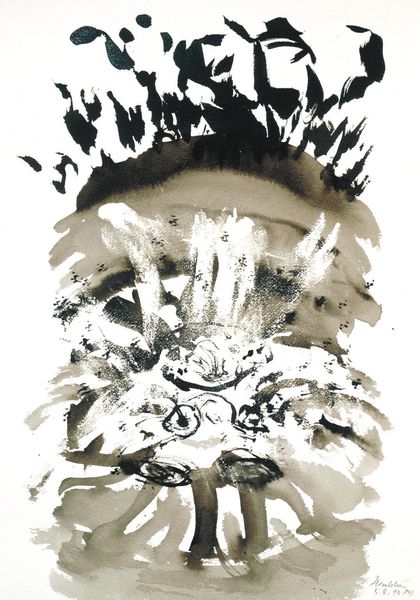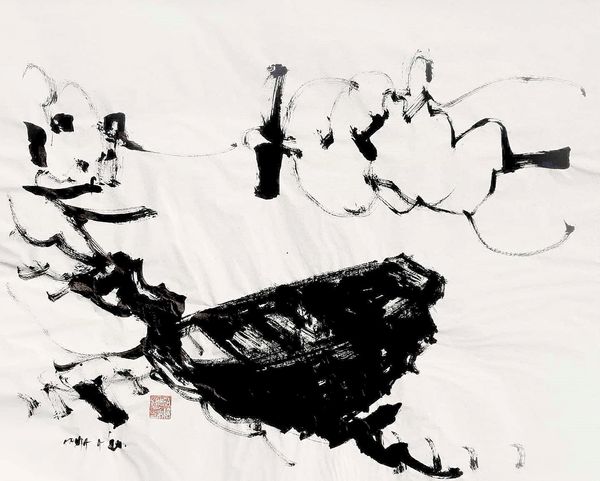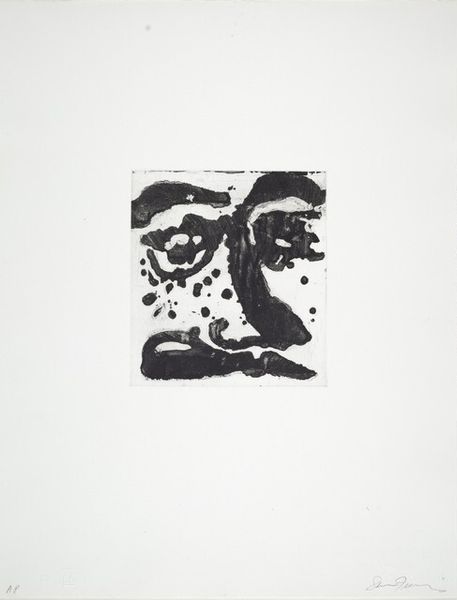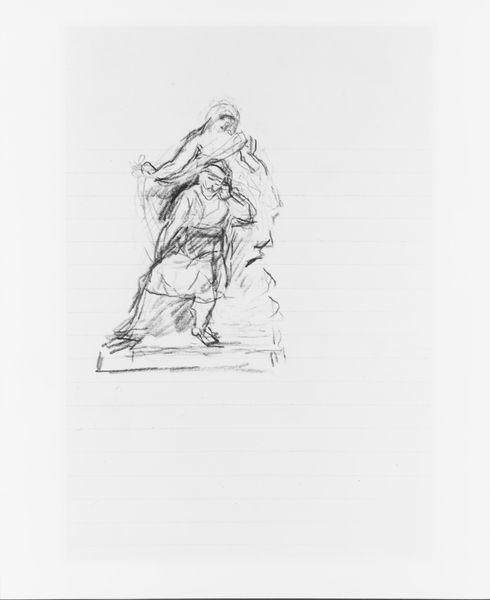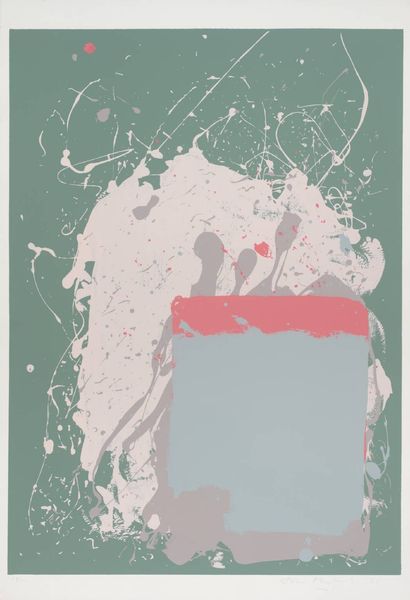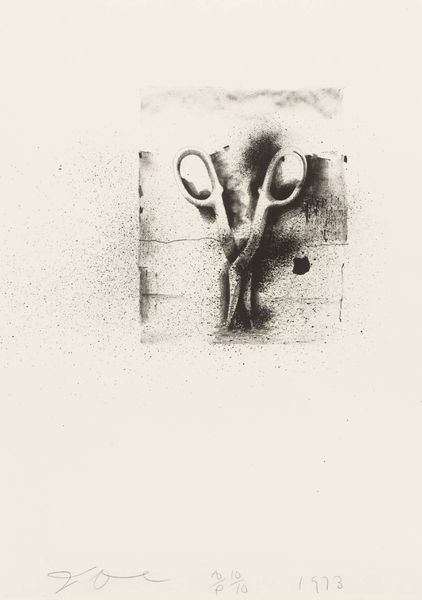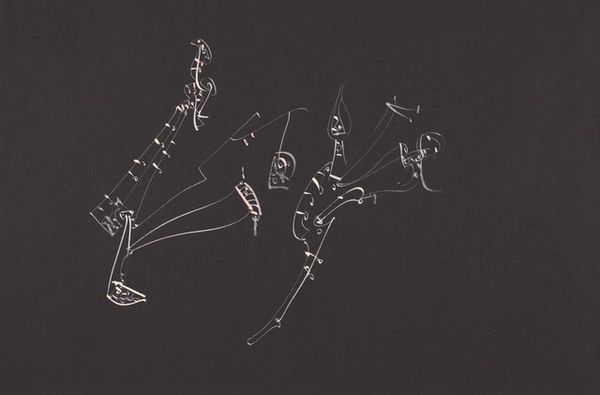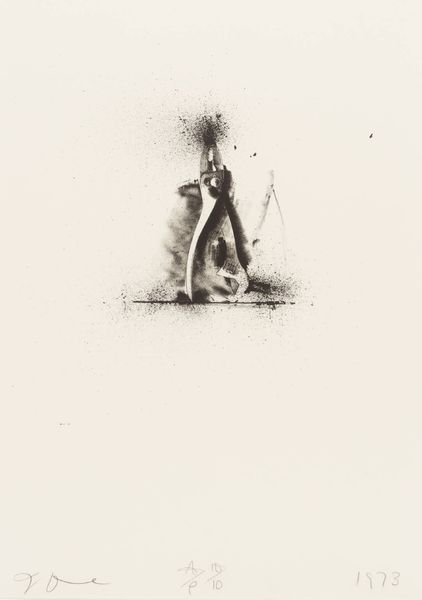
Dimensions: plate: 14.1 x 10.6 cm (5 9/16 x 4 3/16 in.) sheet: 48.6 x 38.1 cm (19 1/8 x 15 in.)
Copyright: National Gallery of Art: CC0 1.0
Curator: Looking at this Self-Portrait by Sam Francis, created in 1982, one immediately notices how it defies conventional portraiture. Instead of a clear likeness, we are presented with an abstract configuration in ink, a monotype on paper. Editor: My initial impression is of fluidity. It’s almost as though a face is emerging from or dissolving into liquid. The ink blots and splatters have a dynamic quality; it is quite evocative. Curator: Francis was deeply involved in Abstract Expressionism, and this work embodies that ethos. He worked at a time when ideas around individuality, the self, and identity were being seriously challenged, re-theorized. What does it mean, in such times, to represent oneself? I wonder what institutions or critical discussions might have informed this. Editor: Absolutely. And formally, the high contrast, with only the stark black ink against the white ground, amplifies the emotional weight. I find it intriguing how Francis employs a limited palette to express so much complexity and feeling. Notice too, that the seemingly random composition nevertheless gives the impression of facial symmetry, with marks positioned to indicate features such as eyes or a mouth. Curator: Thinking about the print medium he chose, monotype, adds another layer of interpretation. As a unique, unrepeatable image, is Francis perhaps commenting on the singularity, or perhaps, conversely, the many and fleeting versions of "self"? These prints became quite collectible in a thriving art market. The institutions showing such radical takes on "portraits" were canonizing new ideas. Editor: Indeed. The expressive qualities of the medium beautifully serve Francis’ artistic intention. The splatters of ink around what appears to be the facial features could represent the fluidity and the fractured nature of identity. Curator: Examining the societal and art historical contexts definitely deepens my understanding. This portrait isn't just an image, it is an object created within an intricate network of institutions, social mores, and marketplaces. Editor: Precisely. And that focus on process, the spontaneity inherent in monotype, further blurs the boundaries between intentionality and chance, allowing the viewer to interpret their own representation of self in these elemental forms.
Comments
No comments
Be the first to comment and join the conversation on the ultimate creative platform.
